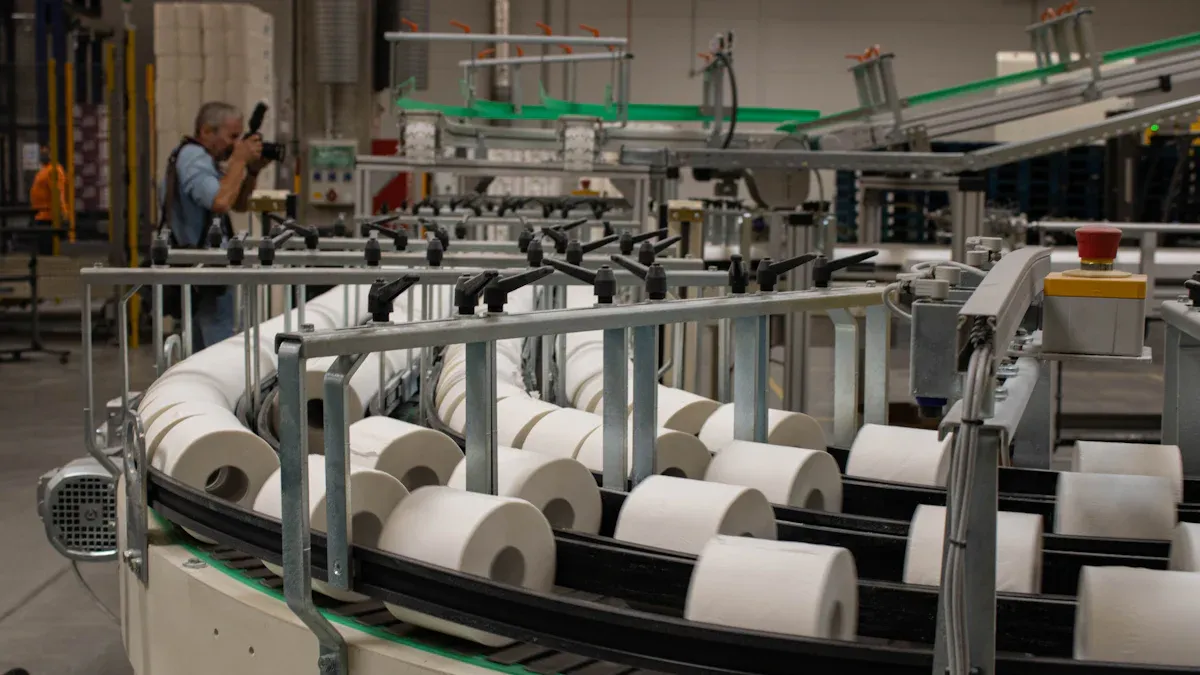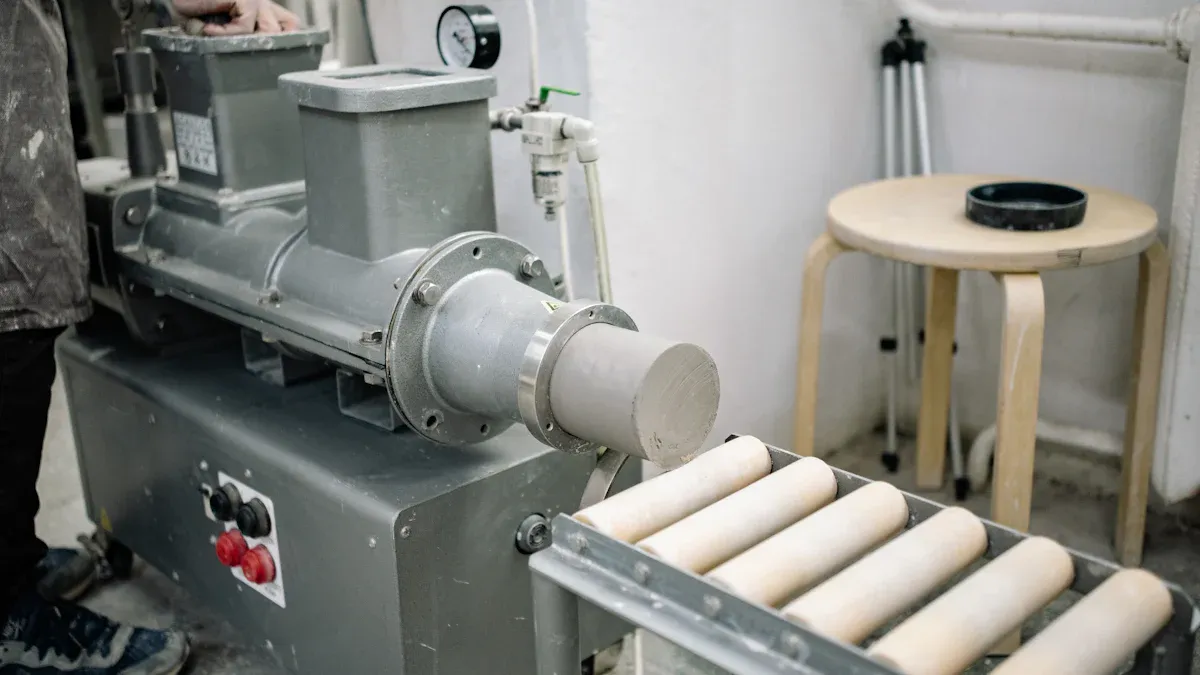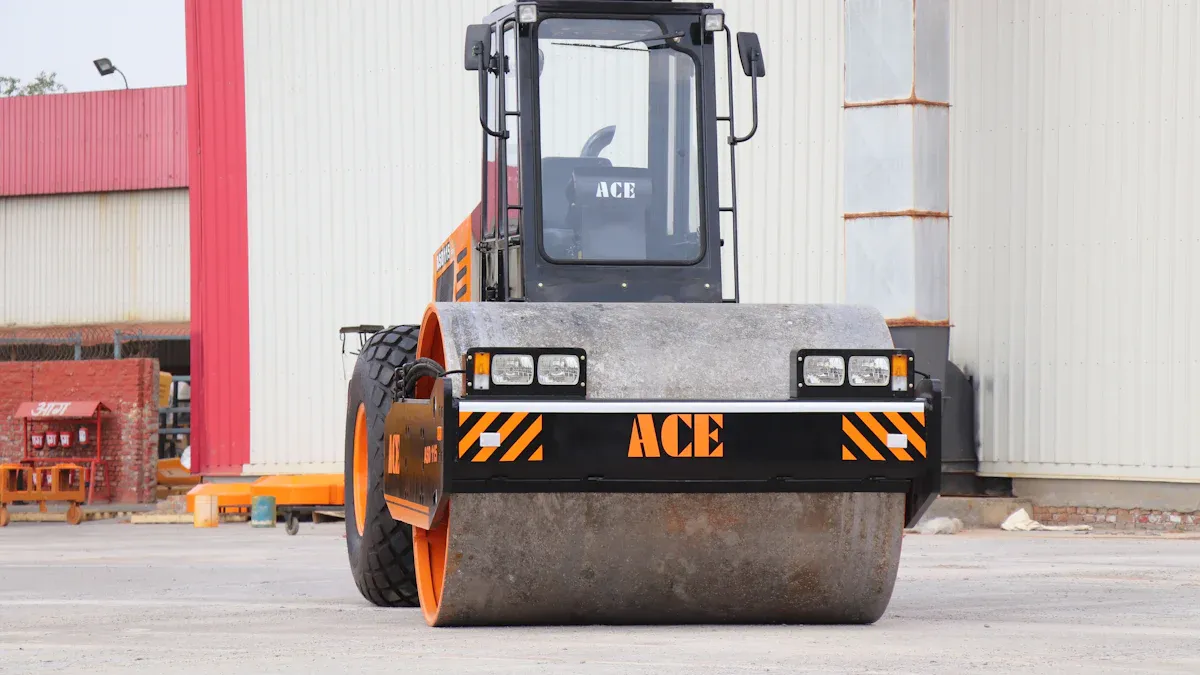
You can extend the life of a Silicon Carbide Roller by making smart choices and using careful handling. Regular checks help you spot problems early. Proper storage keeps each roller safe from damage. These steps help you avoid costly breakdowns and keep your production moving.
المداخل الرئيسية
- Choose the right Silicon Carbide Roller by matching its size, load capacity, and chemical resistance to your specific process needs to avoid early failure.
- Install and handle rollers carefully by following manufacturer instructions, ensuring proper alignment, and avoiding impacts to prevent damage and extend roller life.
- Inspect rollers regularly, clean them gently, and address minor damage early to prevent costly repairs and keep your equipment running smoothly.
Choosing the Right Silicon Carbide Roller

Matching Roller Specifications to Your Application
You need to start by matching the roller to your specific needs. Every process has different requirements. Some rollers must handle heavy loads. Others need to work in high temperatures. Check the size, length, and diameter. Make sure the roller fits your equipment. If you use the wrong size, you risk early failure. Always review your process details before you choose.
Considering Temperature, Load, and Atmosphere
Temperature, load, and atmosphere play a big role in how long your roller lasts. High heat can cause stress. Heavy loads can lead to cracks. Some environments have chemicals or moisture that can damage the roller. You should look at the maximum temperature your process reaches. You also need to know the weight the roller will carry. If your process uses chemicals, check if the roller can resist them.
Tip: Make a table of your process conditions. List the highest temperature, the heaviest load, and any chemicals present. This helps you compare options and pick the best Silicon Carbide Roller.
Avoiding Common Selection Mistakes
Many people make mistakes when they pick a roller. They may ignore the process details. Some choose a roller just because it costs less. Others forget to check the chemical resistance. You should always read the product data sheet. Ask the supplier questions if you are not sure. Picking the right roller saves you time and money in the long run.
Silicon Carbide Roller Installation and Alignment
بعد المصنع المبادئ التوجيهية
You should always read the instructions from the manufacturer before you start. Each Silicon Carbide Roller may have special requirements. The manual will tell you the right way to handle, install, and use the roller. If you skip these steps, you might damage the roller or shorten its life. Keep the manual nearby during installation.
Tip: If you do not understand a step, call the supplier or manufacturer for help. This can prevent costly mistakes.
Ensuring Proper Alignment and Support
Proper alignment keeps your roller working well. If you do not align the roller, it can wear out faster or break. Use a level or alignment tool to check the position. Make sure the supports hold the roller evenly. Uneven support can cause stress and cracks. You should double-check the alignment before you start the machine.
- Place the roller on clean, flat supports.
- Check both ends for level.
- Adjust until the roller sits straight.
Preventing Stress and Damage During Installation
Handle the roller with care. Do not drop or hit it. Even small impacts can cause hidden cracks. Use lifting tools or padded supports when moving the roller. Avoid forcing the roller into place. If it does not fit, check the size and alignment again. Take your time during installation to avoid stress and damage.
ملاحظة: Careful installation helps your roller last longer and perform better.
Silicon Carbide Roller Inspection and Maintenance

Setting Up a Routine Inspection Schedule
You need to check your rollers on a regular basis. A routine inspection schedule helps you catch problems before they get worse. You can set up a weekly or monthly check, depending on how often you use the rollers. Write down each inspection in a logbook. This record helps you see patterns and spot issues early.
- Look at the rollers after every major production run.
- Mark the date and any findings in your log.
- Use a checklist to make sure you do not miss any steps.
Tip: Consistent inspections help you avoid sudden breakdowns and keep your equipment running smoothly.
Cleaning Rollers Safely and Effectively
يجب عليك clean your rollers to remove dust, debris, and buildup. Use a soft brush or cloth. Avoid using metal tools or harsh chemicals. These can scratch or weaken the roller surface. If you see stubborn residue, use warm water and a mild detergent. Dry the roller completely before putting it back in service.
Safe Cleaning Steps:
- Let the roller cool before cleaning.
- Wipe off loose dust with a soft cloth.
- Use mild soap and water for sticky spots.
- Rinse and dry the roller well.
Never use high-pressure water or strong acids. These can damage the roller and shorten its life.
Checking for Cracks, Chips, and Wear
You need to look closely for signs of damage. Cracks, chips, and worn spots can lead to bigger problems if you ignore them. Use a flashlight to check the surface. Turn the roller slowly and look at every part. Pay special attention to the ends and edges.
- Small cracks can grow over time.
- Chips may cause uneven wear.
- Worn areas can affect how the roller works.
If you find any damage, write it down in your inspection log.
Addressing Minor Damage Early
Fixing small problems right away helps you avoid bigger repairs later. If you see a small chip or crack, talk to your maintenance team. Sometimes you can repair minor damage with special fillers or coatings. If the damage is too big, you may need to replace the roller.
ملاحظة: Early action saves money and keeps your Silicon Carbide Roller working longer.
Best Practices for Operating Silicon Carbide Rollers
Avoiding Thermal Shock and Overheating
You need to protect your rollers from sudden temperature changes. Rapid heating or cooling can cause cracks. Always let the roller warm up and cool down slowly. If you move a cold roller into a hot furnace, you risk thermal shock. Use a controlled heating process. Monitor the temperature with a reliable gauge. Never spray cold water on a hot roller.
Tip: Plan your heating and cooling steps before you start. This helps you avoid mistakes that can damage your roller.
Preventing Overloading and Mechanical Impact
You should never overload your roller. Too much weight can cause it to bend or break. Check the load limits in the product manual. Use the right support for your equipment. Avoid dropping heavy items onto the roller. Even a small impact can cause hidden damage.
- Place items gently on the roller.
- Use lifting tools when needed.
- Inspect the roller after any impact.
Minimizing Chemical and Environmental Exposure
يجب عليك أن keep your roller safe from harsh chemicals and moisture. Some chemicals can weaken the roller over time. Store chemicals away from your equipment. Clean up spills right away. Use covers or shields if your process creates dust or fumes. Good ventilation helps protect your roller from harmful gases.
ملاحظة: A clean and dry environment helps your Silicon Carbide Roller last longer.
Storing Silicon Carbide Rollers Correctly
Using Dry, Stable Environments
You need to store your rollers in a dry place. Moisture can cause damage over time. Choose a storage area with low humidity. Keep the temperature steady. Fluctuations in temperature can lead to cracks or other problems. Use a thermometer to check the storage room. If you see condensation, move the rollers to a better spot.
Tip: A climate-controlled room works best for long-term storage.
Protecting from Physical Damage and Contamination
You must protect your rollers from bumps and dirt. Place each roller on a padded surface. Avoid putting them near walkways or busy areas. Dust and debris can scratch the surface. Cover the rollers with a clean cloth or plastic sheet. This keeps out dirt and helps prevent accidental contact.
- Use barriers or signs to mark the storage area.
- Clean the storage space often.
Avoiding Stacking and Improper Handling
Never stack rollers on top of each other. Stacking can cause cracks or chips. Always store rollers side by side with space between them. Use racks or cradles designed for rollers. When you move a roller, use both hands or lifting tools. Do not drag or drop them.
Alert: Improper handling during storage can shorten the life of your rollers.
Reconditioning and Replacing Silicon Carbide Rollers
Identifying Signs of Irreversible Damage
You need to know when a roller cannot be fixed. Look for deep cracks, large chips, or broken ends. If you see a roller that has changed shape or lost its strength, it may be beyond repair. Sometimes, you will notice uneven wear that affects how the roller works. Use a checklist to track these signs:
- Deep or spreading cracks
- Large missing pieces
- Warped or bent rollers
- Loss of surface hardness
If you find any of these problems, stop using the roller right away. Using a damaged roller can cause more damage to your equipment.
Understanding Reconditioning Options
You can sometimes fix minor damage. Small chips or surface wear may not mean you need a new roller. Some companies offer reconditioning services. They can fill small cracks, smooth rough spots, or apply a new coating. Ask your supplier if they offer these services. Always check if the roller meets safety standards after reconditioning.
Tip: Keep a record of all repairs. This helps you decide when to replace a roller in the future.
Planning for Timely Replacement
You should plan for replacement before a roller fails. Track the age and condition of each roller. Set a schedule for regular checks. Order new rollers before you run out. This keeps your production running without delays.
- Make a replacement plan for each roller
- Keep spare rollers in storage
- Review your plan every year
Planning ahead saves you time and money. You avoid emergency shutdowns and keep your process safe.
You can make your rollers last longer by paying close attention to every step. Follow best practices for choosing, installing, maintaining, and storing each one.
Remember: Careful work now means fewer problems later and better results for your operation.
FAQ
How often should you inspect silicon carbide rollers?
You should inspect your rollers at least once a month. If you use them daily, check them every week for cracks, chips, or wear.
Can you repair a small chip on a silicon carbide roller?
Yes, you can fix small chips with special fillers. Always ask your supplier for the right repair method before you start.
What is the best way to store spare silicon carbide rollers?
- Store each roller on a padded rack.
- Keep them in a dry, clean room.
- Never stack rollers on top of each other.


